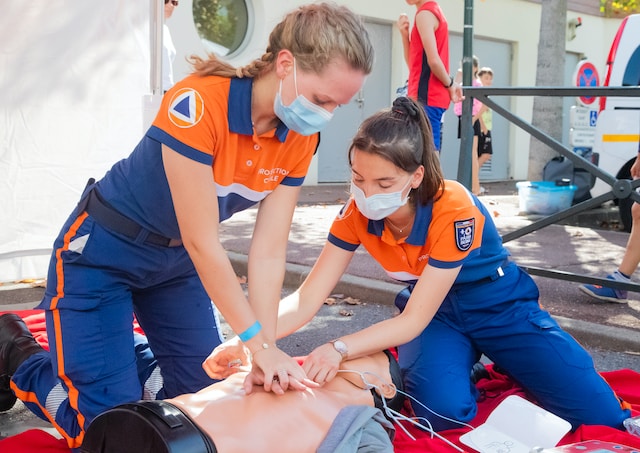CPR is a critical hands-on skill that all of us should possess. However, it can be difficult to practice it in the field when you’ve never done it before. So, it’s easy to understand how many are hesitant to try it.
In many scenarios, rib fractures are a consequence of improperly performing CPR. Outside of that, there are some severe cases where they’re a consequence of performing CPR.
In this article, we’ll walk through some CPR realities that you need to be aware of before you start. Don’t know how often do ribs break during CPR? Then read on!
Potential Causes of Rib Fractures in CPR
Broken ribs during CPR are common and can occur for several reasons. Most commonly, fractures are caused by an improper technique for administering CPR.
This can also include applying too much pressure or using too much force when performing chest compressions. The person performing CPR may be heavier or stronger than the patient, which can substantially increase the risk of fractures.
Improper use of equipment, such as a defibrillator, can also cause fractures. In some cases, rib fractures can also be caused by a traumatic event, such as a fall or car accident, but this is not as common.
Whatever the cause, it is important to seek medical attention and treatment for individuals with rib fractures. If left untreated, the fracture may heal incorrectly, putting them at risk for further medical complications.
Preparation Tactics to Reduce the Risk of Rib Fractures
In order to reduce the risk of cracked ribs from CPR, preparation tactics should be included. This can help ensure the chest compressions are adequate.
When conducting compressions, the rescuer should ensure a minimum depth of 5 cm and approximately 100 compressions per minute. This promotes the generation of an appropriate amount of pressure.
Proper positioning must be used, as a flat surface allows the rescuer to position him/herself and maintain a good depth/pressure throughout the procedure. Also, remember that interruptions during compressions should be kept to a minimum.
Through effective preparation tactics such as recognizing basic techniques of fall prevention and completing CPR certification. The risk of rib fractures can be greatly decreased, significantly improving overall health and physical conditioning. If you want to take the proactive step of lowering your risk of rib fractures today, get CPR certified today by checking out Cprcertificationnow.com
Management and Treatment of Rib Fractures Associated With CPR
Management of these fractures is largely based on the severity of the fracture. Closed or stable rib fractures can typically be managed with pain control, deep breathing exercises, and rest.
For Rib fractures that are considered unstable, bronchoscopy may be indicated to rule out any associated pneumothorax. Patients may require further assessment if there are signs of pleural irritation or thoracic instability.
Aspirin or anti-inflammatory pills can often be used for pain management. Supportive therapy, such as supplemental oxygen, may also be beneficial in the management of these fractures.
Know How Often Do Ribs Break During CPR Today
How often do ribs break during CPR? CPR is an important lifesaving technique, but it is not without risks. Although the risk of rib fractures is low, it is important to be aware of the danger and to perform the technique carefully.
To ensure you are prepared for a medical emergency, take a CPR course to stay up to date with the latest guidelines.
Did you find this article helpful? Visit more of our blogs!










